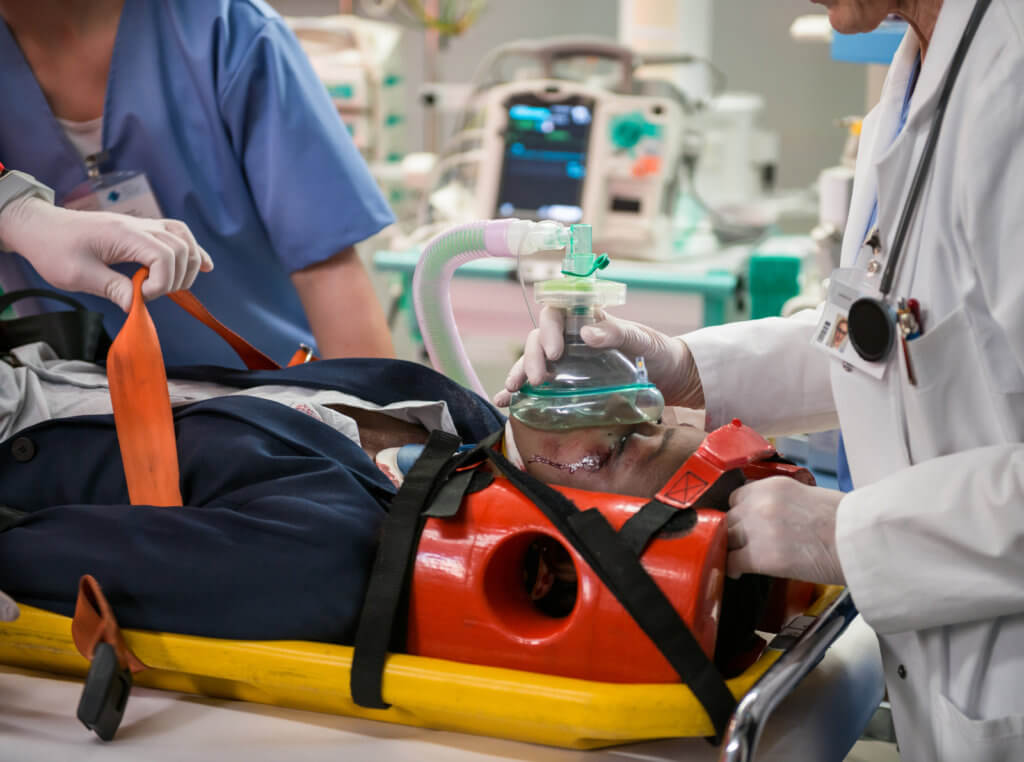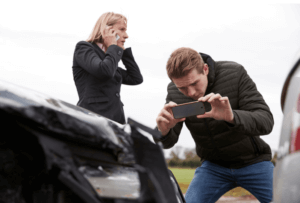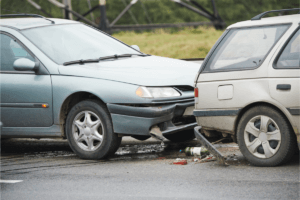At high speeds, rear-end accidents can cause catastrophic damage. Even minor rear-end collisions can lead to torn ligaments and fractured bones. Following the steps below can protect your legal rights and the integrity of your personal injury claim.
1. Call 911
Call emergency services as soon as possible. If you are unable to call, ask the other driver or someone nearby for help calling emergency personnel. It is important to call local law enforcement regardless of the seriousness of the car accident. You will need to file a police report before leaving the scene.
2. Seek Medical Attention As Soon As Possible

For example, car accident injuries can take several hours or days to present with symptoms. Suppose you refuse medical care at the scene and develop symptoms of whiplash a few days later. The insurance company may claim that your injuries are unrelated to the collision because of the lapse in medical treatment. Seeking medical attention as soon as possible after an auto accident is the best way to protect your health and maintain the legitimacy of your injury claim.
3. Obtain Contact Information from the Other Driver
Be sure to exchange important information with the other driver, including:
- Full name
- License plate number
- Insurance information
- Contact information
- Driver’s license number
It is also a good idea to take pictures of the other driver’s license and car tags. If you were rear-ended by an uninsured driver, or a driver that fled the scene, you may still have a legal claim. An experienced car accident attorney can help make sure you get the maximum compensation available.
4. Take Photos of The Accident Scene

- Take close-ups and wide-angle shots
- Photograph all property damage, including any debris in the road
- Take pictures of nearby street signs and vehicles
- Capture images of your injuries
Photographing the full scene of an accident can help support liability and the extent of your injuries.
5. Write Down Important Information
Details can fade after a wreck. As soon as you are able, write down what happened in as much detail as possible. This can help law enforcement and your car accident attorney determine who is at fault in a rear end accident. Be sure to include the names and contact information of any witnesses at the scene.
In addition, it may be in your best interest to keep a journal during your recovery. The success of your injury claim largely depends on the judge and jury understanding your pain.
In addition, it may be in your best interest to keep a journal during your recovery. The success of your injury claim largely depends on the judge and jury understanding your pain. However, it can be difficult for an uninjured person to grasp. Using details from a journal, a rear-end accident lawyer can present your pain in such a way that an otherwise healthy person can understand. When writing, focus on how your injuries have impacted your life.
6. Report Your Car Accident to the Insurance Company
Every auto insurance contract requires policyholders to report a car accident within a reasonable amount of time. However, it is important to know you do not have to answer any questions without legal representation.
Insurance companies often try to minimize claim payouts. In some cases, they can use unsavory tactics that can hurt your claim. Obtaining experienced representation as soon as possible is the best way to protect the integrity of your rear-end accident injury claim.
Obtaining experienced representation as soon as possible is the best way to protect the integrity of your rear-end accident injury claim.
7. Gather Important Documents
Personal injury claims involve extensive paperwork and documentation. Before filing, your lawyer will help you to collect the following:
- A copy of the police report
- Medical records and medical bills
- Any pictures taken to support your injuries or prove liability
- Cell phone records, if applicable
Depending on the circumstances of your case, you may need to collect other pertinent documents. Personal injury claims are time-sensitive and involve several deadlines. Missing a single deadline can jeopardize your claim and prevent you from being able to recover the financial compensation you need to move forward.
8. Retain Experienced Legal Representation
Filing a rear-end accident claim can be complex. The paperwork is extensive, the deadlines are strict, and insurance claims and civil trials are complex and rule-ridden. Claimants are often forced to handle complicated insurance appeals and even litigate in court to recover their rightful compensation. Retaining an experienced Houston car accident attorney can help your claim because they will:
- Prepare and file your personal injury claim
- Gather critical documentation
- Negotiate a fair settlement with the insurance adjuster
- File a personal injury lawsuit before the two-year statute of limitations expires
If the insurance company does not offer you a fair settlement, our accident attorneys can fight for the compensation you deserve in court.
Rear-End Collisions Explained
Every rear end accident has a unique set of circumstances that will determine qualifying damages. Many people assume fault is automatic after being rear-ended. However, either party may be held liable. However, there are several factors that can lead to a rear-end crash. The most common causes include:
- Distracted driving
- Following too closely
- Failing to yield the right of way
- Speeding and reckless driving
Who Is at Fault in A Rear-End Collision?
In some cases, both parties can be found to be at fault under the state’s comparative negligence doctrine. Surprisingly, there are circumstances where the person who was rear-ended can be held partly liable for a car accident:
- If a motorist is stopped on the side of the road and fails to turn on their hazard lights
- If the brake lights no longer function and the driver failed to fix them
- If a driver abruptly reverses
- If a driver stops and signals for a turn then fails to complete the turn
Under comparative negligence, if a driver is found to be more than 50 percent at fault for a car accident, they cannot recover damages in a personal injury lawsuit in Texas.
What is Comparative Negligence?
Comparative negligence is a legal doctrine that seeks to allocate blame in a personal injury matter. Blame is then distributed as a percentage. Injury victims bearing less than 50 percent of the responsibility may collect compensation. The victim’s compensation will be reduced by the amount of their liability.
For example, suppose Driver one rear-ended Driver two at a stop light. Driver two signaled they were turning and changed their mind. Driver one was speeding. Driver two is found to be 20 percent at fault and is entitled to collect 80 percent of the awarded compensation. If the insurance company offers a $100,000 settlement for pain and suffering, driver two may collect $80,000.
Damages in a Rear End Accident Claim
When people are hurt in rear-end car accidents, they may be entitled to recover several different types of damages. At JD Silva & Associates, we have helped our clients recover:
- Medical expenses related to your rear end car accident injuries
- Lost wages if they are unable to work
- Loss of future income
- Pain and suffering damages
- Loss of enjoyment of life damages
- Emotional distress damages
- Possible punitive damages in certain circumstances
Our Pearland rear-end accident lawyers work tirelessly to secure maximum compensation for each and every client. If you or a loved one was injured in a rear end car accident, contact us today. We will aggressively fight on your behalf so you can focus on what matters.

